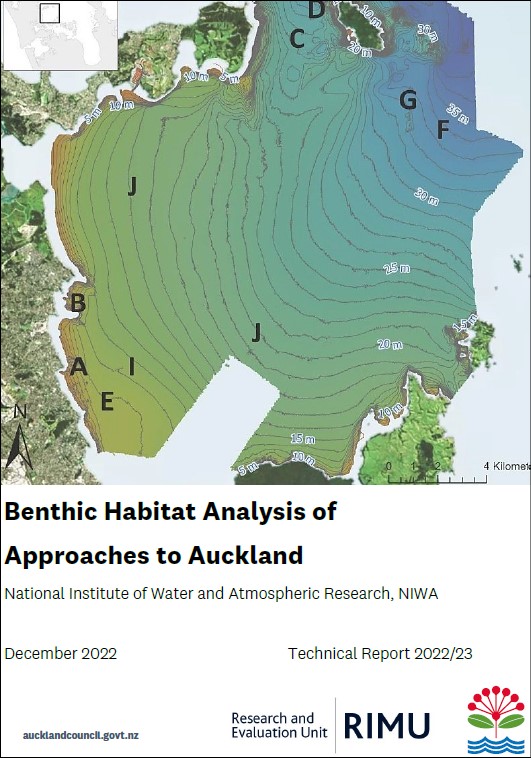Benthic habitat analysis of approaches to Auckland
Author:
National Institute of Water and Atmospheric Research, NIWA, Arne Pallentin, Sally Watson, Erica Spain, Susi Woelz, Tilmann Steinmetz, Pascale OtisSource:
National Institute of Water and Atmospheric Research, NIWA | Auckland Council Research and Evaluation Unit RIMUPublication date:
2022Topics:
EnvironmentBenthic habitat analysis of approaches to Auckland. Desktop classifications using multibeam bathymetric data collected from hydrographic survey HS52
Executive summary
NIWA has been tasked by Te Kaunihera o Tāmaki Makaurau / Auckland Council to produce a desktop habitat study of data collected for the Land Information New Zealand (LINZ) hydrographic survey HS52 – Approaches to Auckland from 2016/17. This habitat analysis makes use of existing multibeam echosounder (MBES) data collected for hydrographic purposes, highlighting the multiuse nature of these data . There are key differences in acquisition and processing of multibeam data for hydrographic standards and those for scientific use. To achieve the best outcome for scientific interpretation, NIWA has partially reprocessed the bathymetry and seafloor backscatter information from data provided to LINZ. This has improved the data for the purpose of scientific interpretation, especially the seafloor backscatter data.
Bathymetry, seafloor backscatter, derived products, and segmentation were used to classify the seafloor. Expert-driven interpretations led to a series of areas/features of interest, based on morphological structure and backscatter signatures. Areas of interest for future work have been identified and include natural features such as isolated rocky reefs, areas of high seafloor backscatter, rugosity, and those identified by classification, as well as anthropogenic features such as the large areas of anchor dredge marks. These interpretations may inform future focused research and sampling to verify the acoustic data interpretations. Suggested further work includes seafloor sediment sampling, video transects, acoustic water-column data collection and analysis, and direct water-column sampling.
NIWA, Auckland Council, December 2022
Auckland Council technical report, TR2022/23
